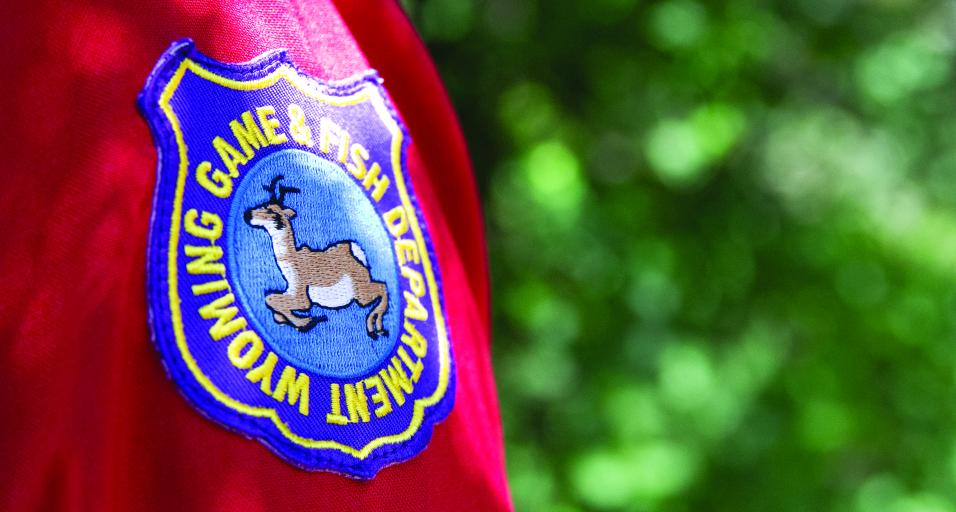Anyone with young children gets this question all the time … why?
Why is the sky blue? Why did you do that? Why is that person doing that? Those types of questions aren’t just for kids. The Wyoming Game and Fish Department gets a lot of those from people of all ages about the state’s fish and wildlife — and everything in between. The Wyoming Wildlife magazine team talked to Game and Fish employees with varied jobs and expertise about commonly asked questions from the public. Below are some of those questions, along with the answers.
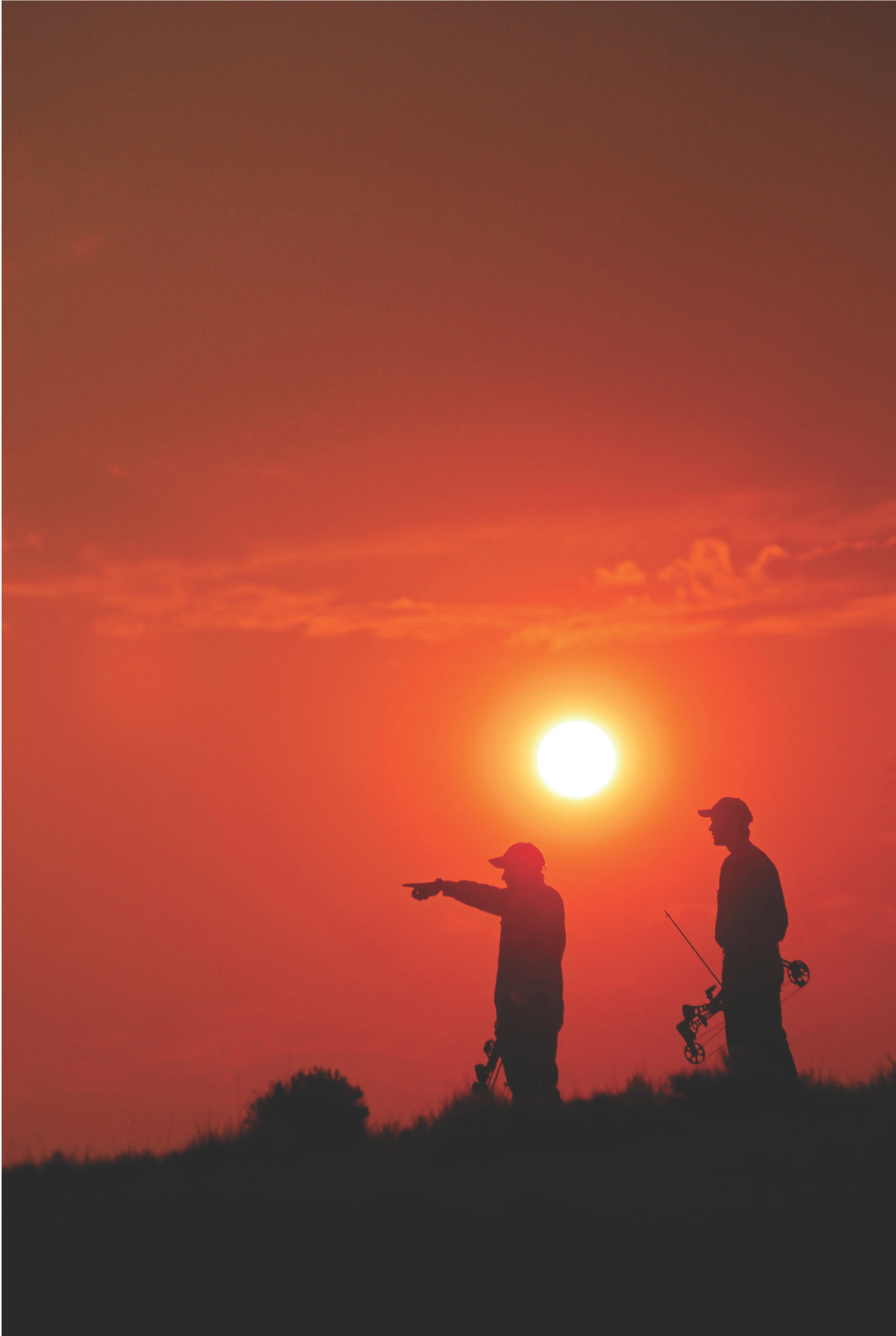
It is best to start looking for hunter education courses before the fall hunting season. (Photo by Wes Uncapher)
Q: Why does Game and Fish have more hunter education courses from January-August instead of during the fall hunting season?
A: Volunteer instructors and some Game and Fish staff primarily teach hunter education courses. The volunteers usually hunt themselves in the fall, and most of our wardens and biologists have their heaviest workload from September-December. More middle schools across the state offer hunter education as a part of an enrichment program, so check with your school district to see if they provide hunter education for middle schoolers. Otherwise, start looking for hunter education classes on the Game and Fish website in January and don’t wait until September. Class listings can be found on the Game and Fish website. — Katie Simpson, hunter education coordinator.
Q: Why do the Boulder Rearing Station and Dubois Hatchery spawn and raise rainbow trout eggs for schools across Wyoming?
A: Game and Fish, in partnership with the national and Wyoming Council of Trout Unlimited, established Trout in the Classroom in schools across Wyoming. Seventy classrooms participated in the program this year. Classrooms received rainbow trout eggs spawned from Game and Fish’s Boulder Rearing Station and raised at the Dubois Hatchery. Classrooms care for these rainbow trout and watch them grow to fingerling size. They released their rainbow trout in May at approved locations throughout the state alongside Game and Fish fisheries personnel. Students in the Trout in the Classroom program are introduced to concepts of ecology, population biology, water quality, fish anatomy, fish life cycle and conservation, as well as deep observation of the resource at hand. — Katie Schlafke, conservation education coordinator.
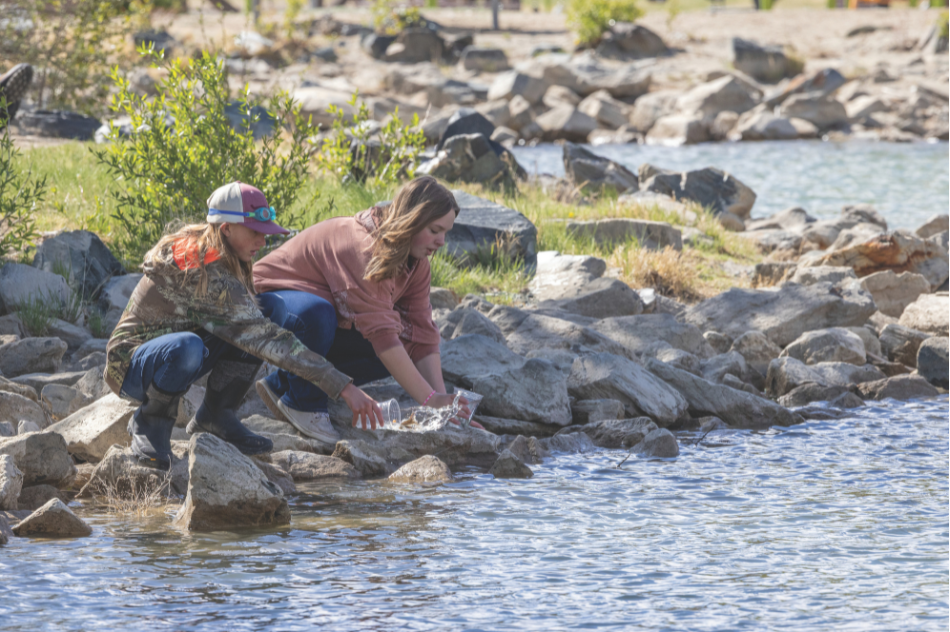
Students that participated in the Trout in the Classroom program release the trout they raised in the Sweetwater Kids' Pond in James Town in southwest Wyoming. (Photo by Patrick Owen/WGFD)
Q: Why does Game and Fish change priority and mandatory chronic wasting disease sample areas every year?
A: Since 1997, Game and Fish has monitored the distribution and prevalence of chronic wasting disease to better understand how this disease affects the health of Wyoming’s deer and elk populations. This disease has been identified in most of Wyoming. Monitoring of CWD over time is important to help understand the potential impacts of the disease, as well as evaluate management actions for deer and elk. This is a challenge because collecting samples for valid estimates of prevalence requires large sample sizes in focused areas across the state. The Game and Fish Wildlife Health Laboratory has limited testing capacity to monitor CWD across the entire state, so focused sampling will rotate hunt areas each year. — Wyoming Game and Fish Department staff.
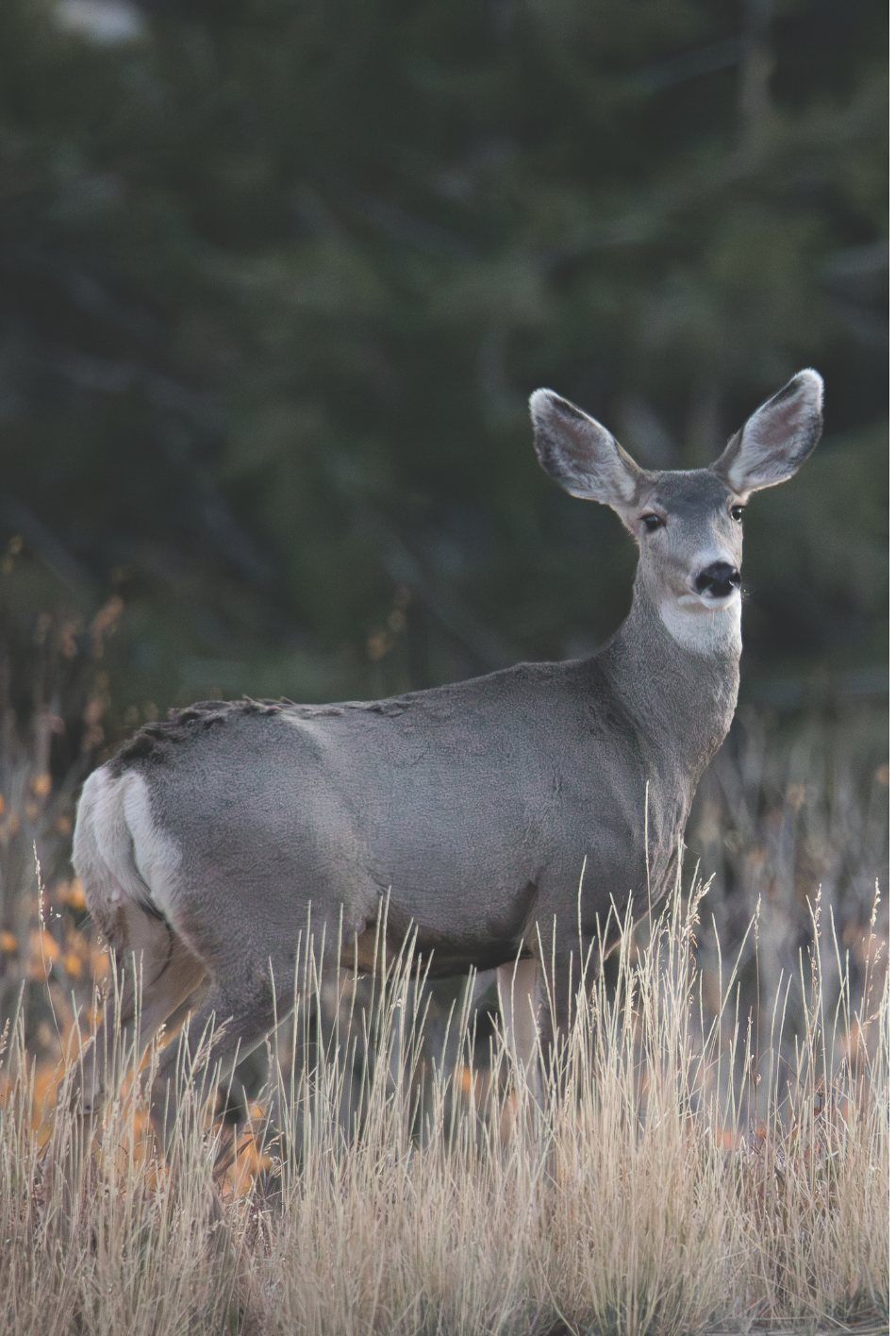
The Wyoming Game and Fish Department has focused sampling areas for CWD each year. These areas rotate to accommodate for limited testing capacity while maintaining monitoring around the state over time. (Photo by Patrick Owen/WGFD)
Q: Why do you poison brook trout and other trout in so many streams and try to replace them with cutthroat trout?
A: As our state fish, cutthroat trout have tremendous intrinsic value, as well as recreational, social and cultural importance to the people of Wyoming. We are lucky to have four subspecies of native cutthroat trout in the state: Yellowstone, Colorado River, Bonneville (Bear River) and Snake River. Relative to other species of trout in Wyoming — such as brown and brook trout — cutthroats are more sensitive to their roommates. Species such as brook trout are known to outcompete cutthroat trout for food and space resources, eventually leading to the loss of cutthroat in waters where the two species overlap. Species such as rainbow trout may hybridize with cutthroat trout, diluting important native genetics. These factors — and more — limit the number of lakes and streams that can support cutthroat trout, and often necessitate the removal of other trout species to ensure cutthroat have the best chance of persistence. In other words, cutthroat need a clean slate to stack the deck in their favor. To achieve our mission of conserving wildlife and serving people, Game and Fish fisheries biologists must balance sportfish and native fish management to conserve valuable native species while simultaneously providing opportunity for Wyoming anglers. Even though we may remove existing trout to restore cutthroat in some lakes and streams, we manage other waters across the state for different species of trout to provide diverse fishery resources. — Jake Ruthven, fisheries biologist in the Lander Region.
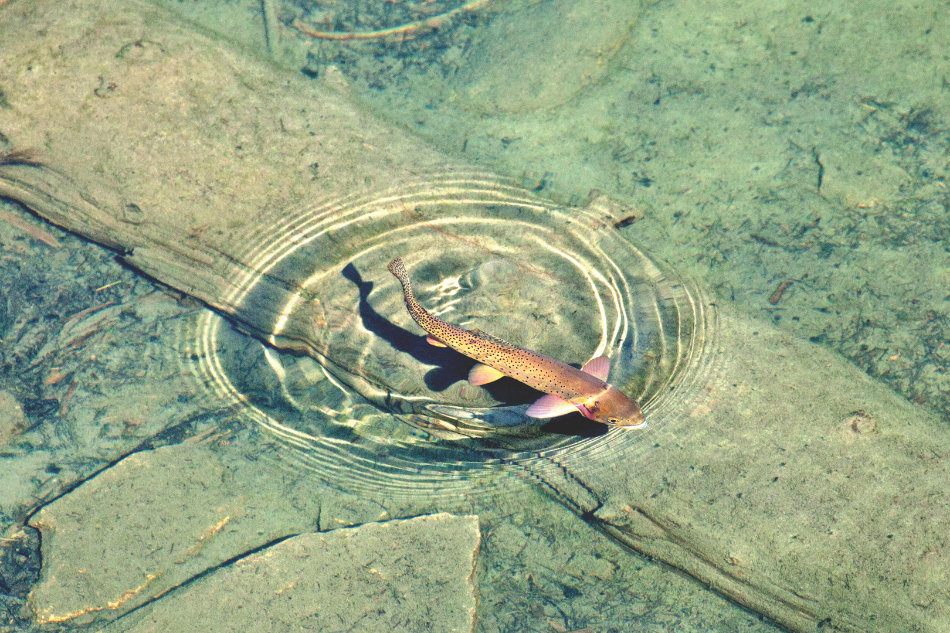
Cutthroats, like this Yellowstone cutthroat trout, are sensitive to the species they share water with. (Photo by Patrick Clayton)
Q: What are conservation easements and why are they important for wildlife?
A: A conservation easement is a legal agreement between a landowner and a land trust or government agency to limit development of a property — typically permanently. There are varying levels of restrictions that can be placed on a property with a conservation easement, but most limit subdivision of the property and construction of improvements to ensure the property is kept in its natural state. Game and Fish holds many conservation easements on private property, and the easements ensure property is available in its natural state for crucial wildlife habitat. — Roy Weber, lands branch chief.
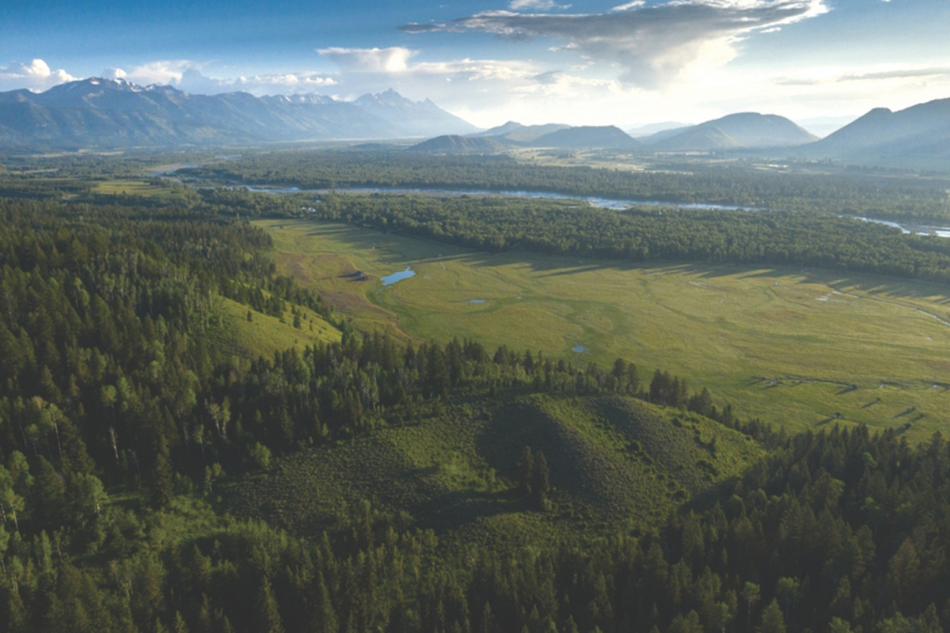
Chimney Draw conservation easement was secured by the Wyoming Game and Fish Department in partnership with The Conservation Fund in 2023. (Photo courtesy of The Conservation Fund)
Q: Why don’t you manage more reservoirs for walleye?
A: Walleye are a great sportfish and one that more and more anglers are interested in pursuing. All fish species have a range of water temperatures where they thrive and provide the best opportunity for anglers. The preferred range for walleye is warmer than for trout and colder than for bass. Most of our decisions around managing fisheries begin with assessing the habitat or things like lake size, water temperatures, depth and other species present. Larger, warmer reservoirs are the most suitable for walleye in Wyoming, and where most of our well-known walleye fisheries are found. They contain the proper combination of temperature, depth, structure, substrate and food for walleye to thrive and often reproduce. Reservoirs that have most but not all of these characteristics often lack the proper components for reproduction. We manage these waters by stocking walleye to maintain their populations. While walleye are an important sportfish in Wyoming, they also are a large, long-lived and toothy predator. Some locations are not stocked with walleye because of the impacts they would have on other popular sportfish. Game and Fish primarily manages walleye in the eastern part of the state, in larger reservoirs with the most suitable habitat, available forage — primarily small fish — and in locations where there are limited concerns of impacts to other popular sportfish. — Stephen Siddons, Fisheries Supervisor in the Sheridan Region.

Walleye are more likely to thrive in Wyoming's larger, warmer water bodies. (Photo by Eric Engbretson Underwater Photography)
Q: Why does Game and Fish own heavy equipment?
A: The department manages more than 200 public access areas and 48 wildlife habitat management areas throughout the state, encompassing more than 500,000 acres. Managing these properties for wildlife and the public requires the use of heavy equipment. This can be backhoes, dump trucks, skid steers, tractors and excavators. The department’s Habitat and Access personnel build fences, plant food plots, maintain elk feedgrounds and perform habitat work on streams, meadows and rangeland. This heavy equipment is critical for completing that work. We also contract out work when it is more feasible to do that. — Ray Bredehoft, deputy chief of Services Division.
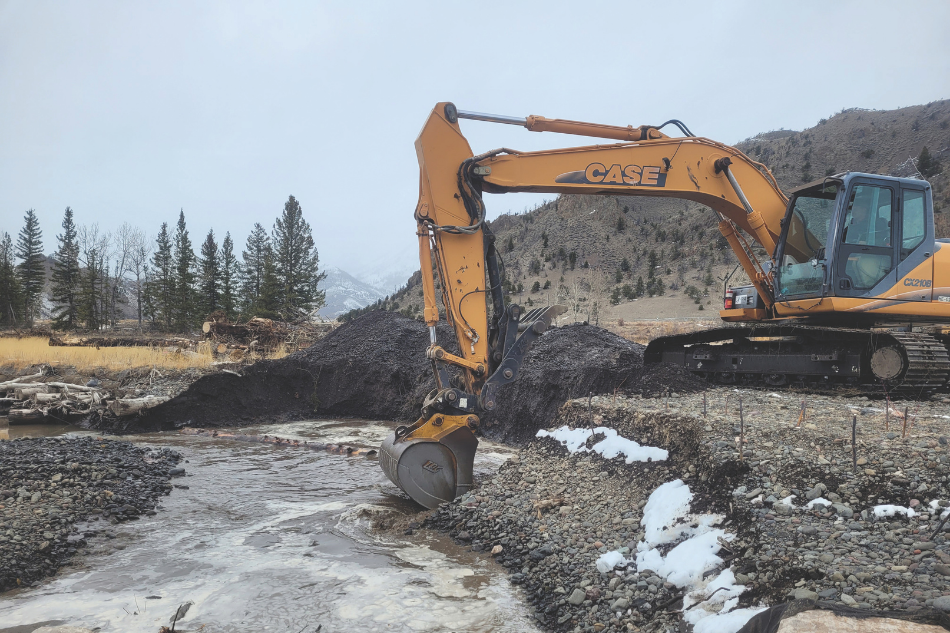
Kade Clark, Game and Fish habitat access technician, operates an excavator while working in the Sunlight Basin Wildlife Habitat Management Area. (Photo by Laura Burckhardt/WGFD)
Q: Why does Game and Fish require hunters to carry proof of their hunter education in the field while they hunt?
A: Wyoming law requires that all hunters who are born on or after Jan. 1, 1966, and are hunting with a firearm must carry proof of their hunter education in the field while hunting. Simply put, you must have proof of your hunter education certificate with you while you are hunting with a firearm, or you are not legally allowed to hunt. Another reason is if hunters are stopped for a field check, the warden may not always have the ability to verify a hunter's education certificate due to limited service. We ask hunters to carry proof of their hunter education with them in the field because Wyoming does not require hunters to provide proof of hunter education when they apply for or buy a hunting license. Many hunters may not have a hunter education certificate at the time they apply for the license and plan to take a class after draw applications are due. This allows some buffer time for applicants to apply for a license and get their hunter education certificate before hunting in the field. — Katie Simpson, hunter education coordinator.
Q: Why do I need to stop at hunter check stations if I don’t have any game with me?
A: Wyoming law requires all hunters on their way to or from hunting to stop at check stations located on their route of travel, whether or not they have game in possession. Check stations are an important tool for the department to gather biological information from harvested animals and find out what hunters are experiencing in the field. Often, biologists and game wardens at check stations are able to help hunters have successful hunts by offering tips on where to go and what to look for. — Aaron Kerr, law enforcement coordinator.
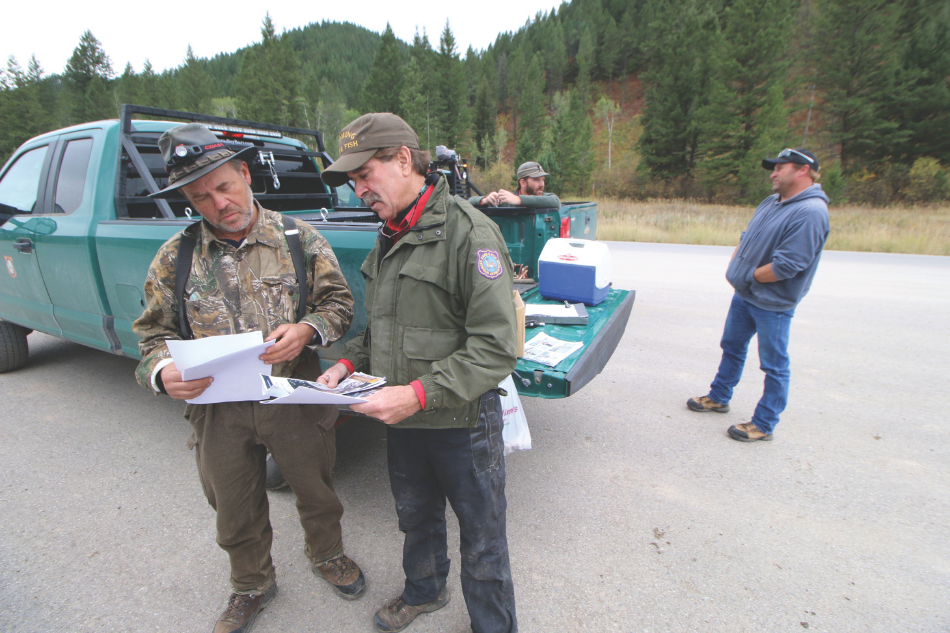
Gary Fralick, wildlife biologist for the Wyoming Game and Fish Department, speaks with a hunter at a hunter check station near Alpine. (Photo by Mark Gocke/WGFD)
Q: Are Game and Fish lands public lands?
A: While the majority of Game and Fish lands allow for public access at certain times of the year for hunting, fishing and recreation, they are not technically public land. The Wyoming Game and Fish Commission owns property throughout Wyoming. This allows the department to manage these areas on behalf of the Commission in a way that benefits the public and wildlife. All of these properties were acquired for specific purposes, like crucial winter range for elk or bighorn sheep. These properties have winter closures to give the wildlife a place for sanctuary during the harshest time of the year while also preventing wildlife damage on neighboring private lands. — Ray Bredehoft, deputy chief of Services Division.
Q: Why doesn’t Game and Fish close hunting seasons for a few years to let mule deer populations recover? A: Most mule deer hunting in Wyoming is for buck mule deer. In most areas, there are sufficient numbers of bucks to support some hunting while leaving enough bucks to breed the available females. Females drive population increases, not the number of bucks. Actually, having too many bucks in an area can reduce production by competing with females for limited resources, reducing female fitness. — Tim Thomas, wildlife biologist in the Sheridan Region and Noah Gibler, senior game warden in Kaycee.
Q: What types of real estate does the Game and Fish acquire?
A: The department acquires termed easements or leases for public access areas, as well as ownership through the purchase of wildlife habitat management areas for wildlife habitat and public access. The lands branch also acquires and disposes of game warden stations, especially in areas with low inventory of housing available for purchase. — Roy Weber, lands branch chief.
Q: Why do I have to tag my animal at the kill site, and what do I do with my carcass coupon while I’m packing my animal out?
A: Properly validating your carcass coupon by detaching it from the license, completely cutting out the dates and signing it before leaving the site of the kill is the only way to legally possess your big or trophy game animal or wild turkey. The tag must be affixed to the animal in a visible manner so game wardens and biologists can see who the animal belongs to. The exception is during transport, where the person transporting the animal can keep the carcass coupon with them to prevent its loss. It often takes more than one trip to get all of the meat from a game animal out of the field. While packing your animal, the carcass coupon should remain with you in case you are checked by a game warden. — Aaron Kerr, law enforcement coordinator.
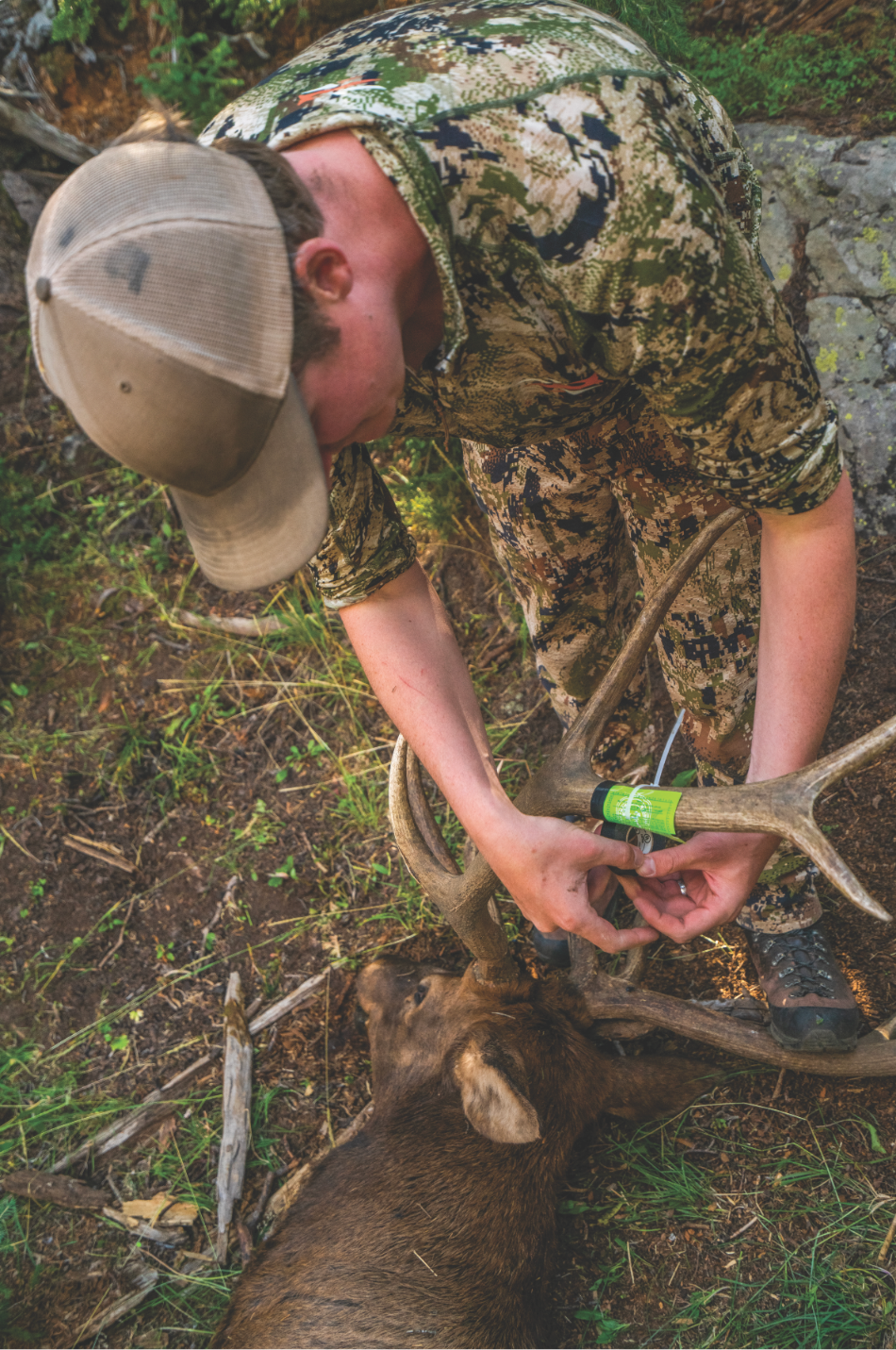
Properly validating your carcass coupon by detaching it from the license, completely cutting out the dates and signing it before leaving the site of the kill is the only way to legally possess your big or trophy game animal or wild turkey. (Photo by Chris Martin/WGFD)
Q: Why does Game and Fish have some hunting licenses restricted to private land only?
A: Some areas have limited public lands, with a lot of private land where most wildlife generally occur. If hunters were allowed unlimited ability to harvest animals on the limited public lands, these lands would soon be void of any wildlife. By limiting pressure on limited public lands, it assures there will be some hunting opportunity available without overharvesting those areas. — Tim Thomas, wildlife biologist in the Sheridan Region.

